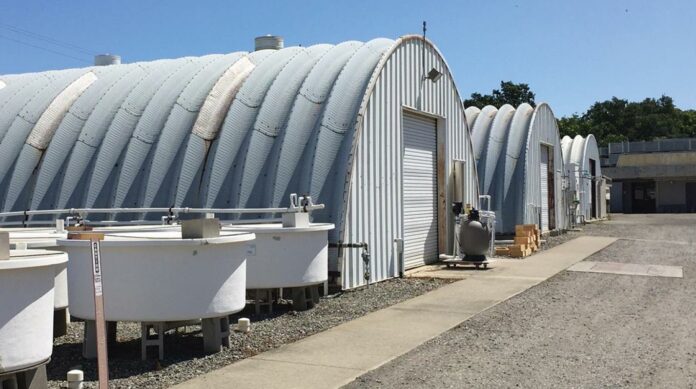The report found that the loss was caused by toxic levels of chlorine in the center’s tanks
By KAYA DO-KHANH — campus@theaggie.org
Lea este artículo en español.
An independent investigation report into the fish mortality event that occurred on Aug. 9, 2022 at the UC Davis Center for Aquatic Biology and Aquaculture (CABA) was released in Feb. 2023, according to a recent press release. The university called the loss of approximately 21,000 fish a “catastrophic failure” in a statement issued on Aug. 11, two days after the incident.
The investigation report by Dr. Anthony Farrell, a professor emeritus at the University of British Columbia, stated that the water contamination, which was the cause of death for the fish, was due to an accumulation of mineral deposits inside sealed piping that led wastewater away from the facility. According to Farrell, this was a problem that had been developing over the course of several decades. The mineral deposits created a blockage that led to a sudden contamination of toxic levels of chlorine into the well water supply that was used to supply the tanks.
“No individual or collection of individuals can be singled out as being responsible,” Farrell wrote in the report. “The support staff, faculty and students who dealt with the catastrophe are to be commended for their collective responses to the catastrophe. The responses were both rapid and appropriate.”
The event occurred overnight, and an undergraduate student employee discovered the fish mortality around 8 a.m. on Aug. 9. According to an article from The New York Times, the chlorine damaged the gills and skin of multiple fish species in the tanks of the center, including the green and white sturgeon and Chinook salmon, which is endangered. Approximately 100 fish survived the event.
The CABA center was built in the 1950s and is home to research programs aimed at sustaining California’s aquatic species, supporting the technological framework of the state’s aquaculture industries and creating sustainable aquaculture production. The center had never before had such “an all-encompassing loss” of fish, said Dr. Brignolo, the executive director of the Research and Teaching Animal Care Program, in a statement to The New York Times.
In the report, Farrell made a number of recommendations to eliminate the risk of a similar event occurring in the future. The recommendations include a replacement of the disinfection system and an advanced procedure for emergencies. Some of the actions that were recommended are already being implemented or planned, and the university has committed to funding improvements for the center.
“We are thankful for our campus partners, staff, faculty and students who have been instrumental in rebuilding the facility quickly and with compassion so that our aquatic conservation programs could be restored,” a statement from the university reads. “CABA welcomed fish back into the facility in October 2022.”
Written by: Kaya Do-Khanh — campus@theaggie.org




